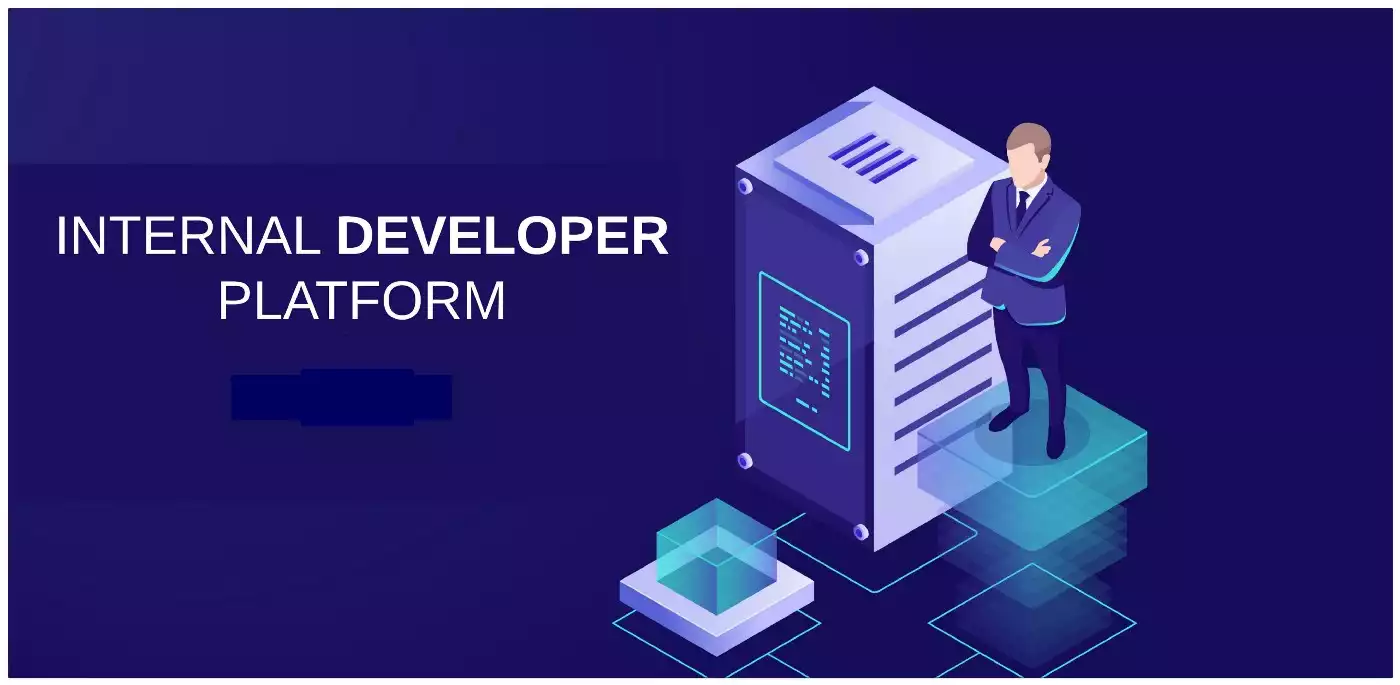Internal Developer Platform (IDP): Key Components and Its Benefits
With cloud computing, DevOps, containerization, and microservice architecture becoming the building blocks of modern application development, internal software development teams increasingly need a straightforward way to manage those resources. A faster time to market is crucial to the success of ever-growing businesses in the modern world. Consumers now expect regular updates on their applications. In elite corporations like Google, Netflix, and Amazon, internal developer platforms (IDPs) are platforms built by their DevOps teams to reduce operational load and provide abstractions for software development.
Overview of Internal Developer Platform (IDP)
A developer’s internal developer platform, or IDP, consists of technologies and tools that allow them to independently manage their organization’s delivery configuration. These platforms will enable them to manage environments, deployments, databases, logs, and anything else they need to operate their apps independently. Increasingly, companies are using internal developer platforms to streamline processes and communication related to feature development by allowing team members to focus on what is important to them. Ops teams set up an internal developer platform (IDP). Ops teams specify which resources are started in which environment or respond to requests while defining application configuration templates and managing permissions.This makes it easier for them to maintain their setup by automating regular processes like spinning up environments and resources and enforcing standards. A developer team has more control over changing configurations, deploying, spinning up fully provisioned environments, and rolling back. The three fundamental components of an IDP are:
1- The core API layer.
2- Open-source drivers are used to providing the underlying infrastructure.
3- A self-service UI and CLI.
Why Enterprises Need an Internal Developer Platform
Modern software enterprises thrive on scalability, reliability, and speed to market. These are some of the benefits that an internal developer platform can bring to a company.1- Using an IDP, all stakeholders in the software delivery process can be more autonomous and accountable by self-serving their infrastructure and resources, managing deployments, and implementing rollbacks without relying on an external team.
2- IDPs eliminate the need for the operation of an operation to start the software delivery pipeline by self-serving their infrastructure needs. It makes it easier to set up and manage the environment, resulting in faster and more frequent release cycles since it’s easier to set up and manage.
3- IDP abstracts the complexity of infrastructure orchestration tools and application configuration management used by the Ops/DevOps team, allowing developers to manage and version application configurations across multiple cloud platforms while orchestrating new and existing deployments. Moreover, automation, one of DevOps’ most essential pillars, streamlines workflows.
4- IDP also reduces complexities and automates the iterative process of infrastructure creation and management, allowing developers and DevOps to focus more on business-critical responsibilities.
The critical components of IDP
Internal Developer Platform consists of the following components:Role-based Action Management
It enables operations teams to specify who is authorized to ship what code in what environment or make certain changes to which services and who is authorized to ship which code in which environment. Additionally, it offers limited access to certain aspects of your delivery configuration and enables teams to collaborate with other contributors.Observability
IDPs show container logs and deployment errors. The Monitoring App automatically links apps and environments to Observability. Developers can self-service and take ownership of their apps by enhancing visibility and surfacing concerns. Additionally, it reduces the cost of setting up monitoring elsewhere.Infrastructure Orchestration
The IDP allows developers to self-serve their application’s infrastructure, freeing up operations staff from transactional tasks. It orchestrates the existing infrastructure for smoother deployments.Deployment Management
Provides a reliable and repeatable deployment configuration, resulting in consistent environments. Creates manifests before deployment, starts infrastructure orchestration, and ensures code delivery. Allows undoing and redoing deployments.Environment Management
In most cases, development teams request that a new environment be set up, but doing so takes a long time. Developers can use the IDP platform to create or restore environments as a self-service feature. By creating fully provisioned environments on demand, developers can ensure consistency and ease of maintenance while managing these settings at scale.Application Configuration Management
Ops teams can specify golden paths and standards for deploying application configuration changes this way. Auditable and easy-to-maintain setups result in new manifests for each deployment. It eliminates the need for developers to mess with scripts and makes them scalable and dependable. IDPs ensure consistency in the environment. They are responsible for all resources linked to an application, such as databases.Benefits of Internal Developer Platforms
2- Using IDPs allows you to introduce faster release cycles for applications, which results in a shorter time-to-market.
3- An IDP simplifies the complexity of managing application configuration. IDPs manage all external and internal resources related to an application, including databases.
4- To automatically publish frequent application service modifications, the operations team designs optimal deployment pipelines for developers to use during the development process.
5- The client receives their products faster and at a lower cost. Software releases become more stable since they may commence at the beginning of the project.
Tools of the internal developer platform
To implement internal developer platforms, you can either purchase a framework or build one from scratch.Whether an internal or third-party framework, an IDP framework must provide five core functions: infrastructure orchestration, configuration management, deployment management, role-based access control, and environmental management. A trustworthy internal platform should reflect the fact that IDPs are built on top of DevOps tooling. While maintaining scalability, dependability, and flexibility, an IDP must allow the developer to manage the application configuration. Integrated with your existing infrastructure and easy to monitor, it must abstract the complexity of creating a new environment, enhancing productivity and saving developers time.
1- Gimlet
Using Gimlet, developers can manage infrastructure independently through infrastructure orchestration, environment management, and deployment management, making it a partial internal developer platform. It runs Kubernetes deployments for mid-sized businesses but does not provide application configuration management, making it a partial infrastructure delivery platform.2- DevOpsBox
It provides an abstraction layer to enable developers to provision and manage their infrastructure on the fly using a NoOps platform built on top of comprehensive DevOps tools. In addition to orchestrating application infrastructure, configuration management, environment management, and appropriate RBAC, it also includes IDP.3- Backstage
It’s a developer portal development platform. It’s open-source and developed by Spotify, enabling huge teams to create and manage thousands of services efficiently and provide visibility into each developer’s and team’s resource usage through a centralized control plane.4- Humanitec
One of the front-liners in advocating IDP adoption among large software teams and enterprises is Humanitec. Humanitec offers a lightweight API that allows developers to self-service by connecting to your underlying infrastructure. To provide developers with a pleasant experience when provisioning and managing their infrastructure, a group of former Google platform engineers developed it.wrapping up
With internal developer platforms, Ops and Development teams collaborate differently. They enable you to embrace a “you build it, you run it” mentality by establishing a completely separate ownership culture. IDPs lower transactional conversations between operations and developers by automating them. Internal Developer Platforms have a substantial impact on both operations and development. IDP is widely used today by large organizations due to its incredible benefits to operations and development teams.Download this Article in PDF format

Arashtad Custom Services
In Arashtad, we have gathered a professional team of developers who are working in fields such as 3D websites, 3D games, metaverses, and other types of WebGL and 3D applications as well as blockchain development.


